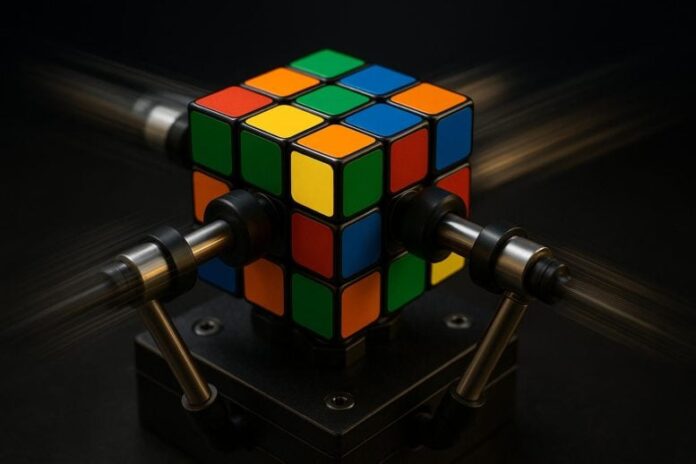A group of Purdue engineering student built a lightning fast robot, Purdubik’s Cube, that now holds the Guinness World Record in solving a Rubik’s Cube within 0.103 seconds.
Using co-op experience, personal inspiration, university support, and industrial hardware, the students created a robotic system that is so fast, it finishes before you blink.
Record Breaking Speed: Redefining the Puzzle Solving Process
For many people, solving a Rubik’s Cube can be a challenging task. For a group at Purdue University of engineering students, it was a chance to make history and push the limits of speed, accuracy, and automation.
The team’s creation, called Purdubik’s Cube is a lightning-fast robot system that holds the Guinness World Record.
The robot completed the task within 0.103 seconds. This is faster than a blink of an eye and nearly three times quicker than the previous record set by engineers in Japan 2024 of 0.305 seconds.
This team, which included Junpei Ota and Aden Hurd along with Matthew Patrohay and Alex Berta, did more than break a record. They were officially recognized by Guinness World Records as a result of their engineering feat.
Engineering Friendship – The Team Behind the Bot.
It wasn’t a high tech lab that started this story. Purdue’s Cooperative Education Program was the first step, which connected students with real-world experience in industry. It was there that team members Hurd Ota and Patrohay met for the first time. Hurd said that the co-op programme brought together his team. It helped us develop not only the friendships which led to this collaboration but also the technical and professional skills that we needed to pull it off. Their hands-on experience also helped them secure sponsorships to bring to life their ambitious idea. Patrohay’s dream began even earlier.
He said, “I always say my inspiration is a former world record holder.” “In high school, I watched a video of
MIT
” ” data-gt-translate-attributes=””[{“attribute”:”data-cmtooltip”, “format”:”html”}]” ” role=””link”” tabindex=””0″ “>
MIT students solve the cube in 380 microseconds. I thought that was a cool project. I’d like to beat it one day. Now I’m at Purdue, proving we can go faster.”





